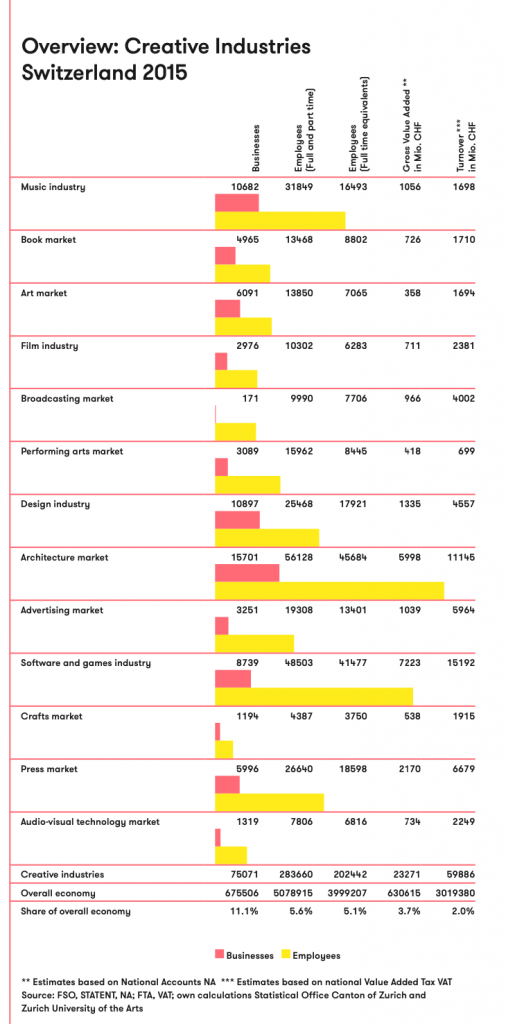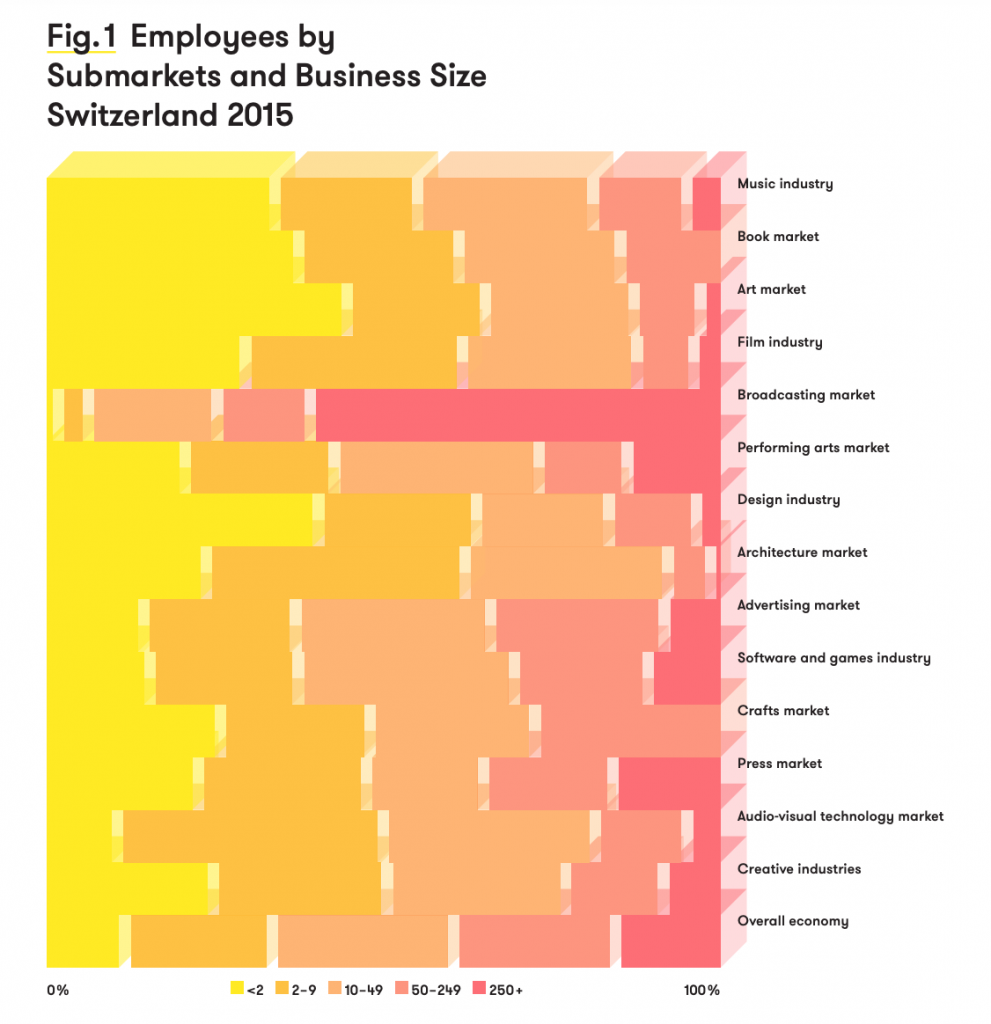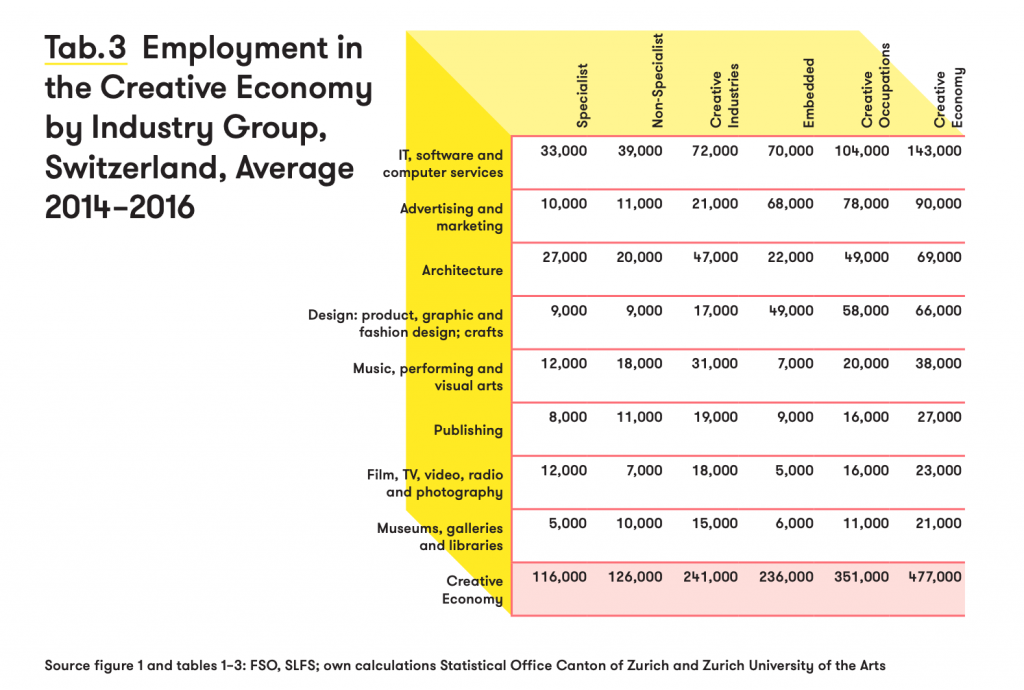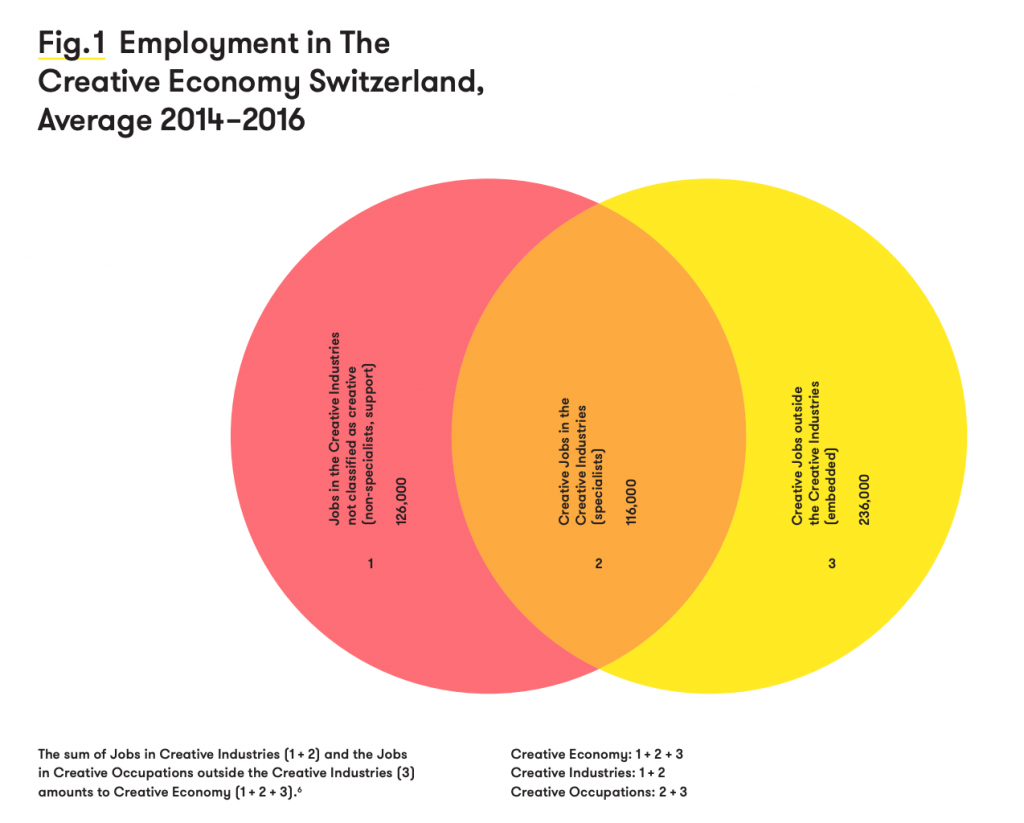According to the “Taschenstatistik”/Statistical Data on Culture in Switzerland 2019, the cultural and creative economies in Switzerland operate mainly as cultural and creative companies that have a main commercial goal through the creation, production, distribution, and exploitation of cultural goods and services.
The publication by the FOC points out that the distinction between profit or public utility, and public subvention or private, is very blurry. Indeed, the sector benefits from these multiple potentials of value creation.
According to the 2018 Report on Creative Economies published by the Zurich Centre for Creative Economies (ZCCE, Zurich University of the Arts), there are 13 different submarkets that can be identified, such as the music industry, book market, and art market. This report “attempts to capture the complex creation, production, dissemination and exploitation processes of the creative industries and their submarkets.”
The basic information below reveals the significance of the Swiss creative industries in 2015 compared to the country’s overall economy.
In 2015, roughly 284 000 persons were employed in Switzerland’s creative industries, in around 75 000 businesses. This represented 11 % of Swiss businesses and 6 % of all employees. The creative industries generated an estimated Gross Value Added (GVA) of CHF 23 billion and an estimated turnover of CHF 60 billion. This corresponded to almost 4 % of Switzerland’s GVA and 2 % of Switzerland’s total turnover.
In recent years, growth in the creative industries has been more positive than in the overall economy. This dynamic development is expected to continue. Between 2013 and 2015, the average number of employees in all submarkets increased by 2.4 %, the number of businesses by 6.4 % and GVA by 5.4 %. Thus, the creative industries, a complex of different economic activities, grew significantly more than the overall economy, where growth is roughly one fifth lower for businesses (+ 1.9 %) and about half lower for the number of employees and for GVA (+ 3.2 % and + 2.5 % respectively).
Concerning regional distribution, Zürich remains the main hub for creative industries along with Basel, an observation that brings the urban/rural divide back into play again and would benefit from further exploration.

Zurich Centre for Creative Economies: Creative Economy Report Switzerland 2018; (p. 49) higher resolution

Zurich Centre for Creative Economies: Creative Economy Report Switzerland 2018; (p. 48) higher resolution

Zurich Centre for Creative Economies: Creative Economy Report Switzerland 2018, (p. 81) higher resolution

Zurich Centre for Creative Economies: Creative Economy Report Switzerland 2018 (p. 80) higher resolution
New models of collaboration – Culture and Business
As part of the “Culture and Business” programme (2016-2020), the Swiss Arts Council Pro Helvetia has been supporting design and interactive media since 2016. Now, not only do they take a priority seat, but they are also integrated into the realm of the institution’s funding categories. Changes in innovation and creation also create new conversations between Art, technology, and science, which have become of major importance for artistic creation and the creative industries. On these terms, Pro Helvetia is encouraged to support further partnerships with research and education opportunities. Since 2021, the Swiss Arts Council Pro Helvetia has been running its own department that provides sustainable support for Swiss creatives in the two specialist areas of design and interactive media.
Working conditions
According to data from the Federal Statistical Office (Cultural workers: Number, socio-demographic profile and working conditions (2021)), the share of employed cultural workers in full-time employment in Switzerland has decreased from 55.7% to 49.8% of cultural workers between 2010 and 2019 (before Covid-19), while the share of part-time workers (< 50%) has increased from 20.5% to 22.5%. The (consistently) high proportion of women among part-time workers (< 50%) is striking: 31.9%, compared to 13.4% for men (2019 data). The number of self-employed in the cultural sector (definition by the FSO), has increased from 41.5% to 45.1% between 2010 and 2019.

Comments are closed.